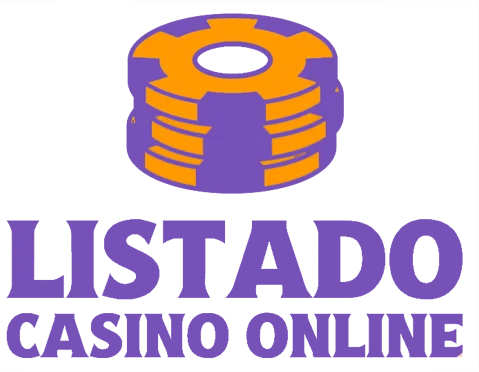La emoción del baloncesto en la KBL: Partidos de mañana
El baloncesto en la KBL, o Korean Basketball League, siempre ha sido una fuente de adrenalina y emoción para los aficionados al deporte. Cada partido es una oportunidad para ver el talento y la habilidad de los jugadores surcoreanos en acción. Mañana, varios equipos se enfrentarán en partidos que prometen ser inolvidables. En este artículo, te llevaremos a través de un análisis detallado de los partidos programados, incluyendo predicciones expertas y consejos de apuestas para que puedas disfrutar al máximo de la experiencia.
Resumen de los partidos programados
La KBL ofrece una temporada competitiva llena de sorpresas y giros inesperados. Mañana, los siguientes encuentros están programados:
- Ansan Magic vs. Seoul Samsung Thunders
- Incheon Electroland Elephants vs. Busan KT Sonicboom
- Jeonju KCC Egis vs. Daegu KOGAS Pegasus
Cada uno de estos partidos promete ser una batalla intensa, con equipos que buscan mejorar su posición en la tabla y asegurar su lugar en los playoffs.
Análisis del partido: Ansan Magic vs. Seoul Samsung Thunders
El enfrentamiento entre Ansan Magic y Seoul Samsung Thunders es uno de los más esperados de la jornada. Ambos equipos han mostrado un rendimiento impresionante esta temporada, y este partido podría decidir quién lidera la liga.
Ansan Magic: Fortalezas y debilidades
Ansan Magic ha demostrado ser un equipo formidable gracias a su defensa sólida y su capacidad para ejecutar jugadas estratégicas. Sin embargo, su dependencia de un pequeño grupo de jugadores clave puede ser una debilidad si alguno de ellos no está en su mejor forma.
Seoul Samsung Thunders: Fortalezas y debilidades
Por otro lado, Seoul Samsung Thunders destaca por su ataque explosivo y su habilidad para adaptarse a diferentes situaciones durante el juego. No obstante, su defensa ha mostrado ciertas vulnerabilidades que Ansan Magic podría explotar.
Predicción del experto
Basándonos en el rendimiento reciente de ambos equipos, se espera un partido muy cerrado. Sin embargo, la experiencia y la cohesión del equipo de Ansan Magic podrían darles una ligera ventaja. Se recomienda apostar por una victoria ajustada de Ansan Magic.
Incheon Electroland Elephants vs. Busan KT Sonicboom: Un duelo épico
Este partido es crucial para ambos equipos, ya que buscan consolidar su posición en la mitad superior de la tabla. Incheon Electroland Elephants ha mostrado una mejora notable en sus últimos juegos, mientras que Busan KT Sonicboom sigue siendo un equipo impredecible.
Incheon Electroland Elephants: Fortalezas y debilidades
Incheon ha fortalecido su defensa en las últimas semanas, lo que les ha permitido mantenerse competitivos en cada partido. Sin embargo, su ataque aún no es tan efectivo como debería ser.
Busan KT Sonicboom: Fortalezas y debilidades
Busan es conocido por su capacidad para sorprender a sus oponentes con jugadas inesperadas. Su ataque es uno de los mejores de la liga, pero su defensa sigue siendo inconsistente.
Predicción del experto
Dada la forma actual de Incheon Electroland Elephants, se espera que mantengan su defensa sólida y logren una victoria por un margen estrecho. Apostar por una victoria ajustada de Incheon podría ser una buena opción.
Jeonju KCC Egis vs. Daegu KOGAS Pegasus: El choque de titanes
Este partido es uno de los más emocionantes de la jornada, ya que ambos equipos han estado compitiendo ferozmente por el liderato. Jeonju KCC Egis y Daegu KOGAS Pegasus han demostrado ser dos equipos muy equilibrados esta temporada.
Jeonju KCC Egis: Fortalezas y debilidades
Jeonju KCC Egis ha mostrado una gran habilidad para manejar el ritmo del juego y ajustar sus estrategias según sea necesario. Sin embargo, su dependencia del rendimiento individual puede ser un riesgo si alguno de sus jugadores clave no está en forma.
Daegu KOGAS Pegasus: Fortalezas y debilidades
Daegu KOGAS Pegasus tiene uno de los ataques más letales de la liga, pero su defensa a veces deja mucho que desear. Su capacidad para anotar rápidamente puede cambiar el curso del juego en cualquier momento.
Predicción del experto
Este partido promete ser muy reñido. Dada la capacidad ofensiva de Daegu KOGAS Pegasus y la habilidad táctica de Jeonju KCC Egis, se espera un encuentro emocionante con muchos cambios en el marcador. Apostar por un total alto podría ser una apuesta interesante.
Consejos generales para apostar en la KBL
Apostar en baloncesto puede ser tanto emocionante como rentable si se hace con conocimiento y estrategia. Aquí te ofrecemos algunos consejos generales para mejorar tus probabilidades:
- Investiga a fondo: Conoce a los equipos y jugadores involucrados en cada partido. Analiza sus estadísticas recientes y considera factores como lesiones o suspensiones.
- Fija un presupuesto: Decide cuánto estás dispuesto a gastar antes de comenzar a apostar y adhiérete a ese límite.
- Diversifica tus apuestas: No pongas todos tus huevos en una sola canasta. Considera hacer apuestas múltiples para distribuir el riesgo.
- Sigue las tendencias: Mantente informado sobre las tendencias actuales en la liga y cómo podrían influir en los resultados.
- Aprende a leer las cuotas: Entiende cómo funcionan las cuotas y cómo pueden reflejar el valor real de una apuesta.
Historias destacadas: Jugadores a seguir mañana
Cada partido tiene sus estrellas emergentes y veteranos experimentados que pueden cambiar el curso del juego con sus actuaciones individuales. Aquí te presentamos algunos jugadores a seguir durante los partidos programados para mañana:
Jung Hae-in (Ansan Magic)
<|repo_name|>EvanDavies/AutoPilot<|file_sep|>/src/edu/duke/ece/autopilot/sensor/VelocitySensor.java
package edu.duke.ece.autopilot.sensor;
import edu.duke.ece.autopilot.geometry.RigidBody;
import edu.duke.ece.autopilot.geometry.Vector;
public class VelocitySensor extends Sensor {
private static final long serialVersionUID = -7024639969770487926L;
public VelocitySensor(RigidBody target) {
super(target);
}
@Override
public Vector getMeasurement() {
return target.getVelocity();
}
}
<|file_sep|>chapter{Discussion and Conclusion}
The goal of this project was to design and implement an autonomous car for the Duke University ECE Autonomous Car Competition (ECEAC). The final system achieved this goal with the following features:
begin{itemize}
item A robust localization system that can track the car's position to within $pm0.25$ meters
item A robust path planner that can navigate to multiple waypoints on the course
item A control system that uses PID control to follow the planned path
item A wireless interface that allows for remote monitoring of system performance
end{itemize}
A number of lessons were learned in the process of developing this system:
begin{itemize}
item The importance of prototyping and simulation when designing new systems
item The importance of thorough testing when developing new algorithms
item The importance of documentation when developing software systems
end{itemize}
In addition to these lessons there are many improvements that could be made to the system:
begin{itemize}
item Better handling of large errors in localization
item Better detection and handling of slippage on curves
item Better handling of tight turns (not possible with current differential drive)
end{itemize}
Overall this project was very successful in achieving its goals and provided valuable lessons for future projects.<|repo_name|>EvanDavies/AutoPilot<|file_sep|>/src/edu/duke/ece/autopilot/sensor/Sensor.java
package edu.duke.ece.autopilot.sensor;
import edu.duke.ece.autopilot.geometry.RigidBody;
import edu.duke.ece.autopilot.geometry.Vector;
public abstract class Sensor {
protected RigidBody target;
public Sensor(RigidBody target) {
this.target = target;
}
public abstract Vector getMeasurement();
public Vector getError(Vector expected) {
return getMeasurement().subtract(expected);
}
}
<|file_sep|>chapter{Autonomous Car Architecture}label{chap:architecture}
This chapter describes the architecture of the autonomous car developed for the ECEAC competition.
section{System Overview}
Figure~ref{fig:system_overview} shows an overview of the autonomous car system architecture developed for this project.
The core of the system is the texttt{Autopilot} class which implements all functionality related to controlling and driving the car (including localization and navigation). This class communicates with other parts of the system using two primary mechanisms:
begin{enumerate}
item Methods on the texttt{Autopilot} class are called by external classes to perform various actions (such as starting/stopping the car or changing its speed)
item Methods on the texttt{Autopilot} class send notifications to registered observers when various events occur (such as completing a lap or reaching a waypoint).
end{enumerate}
The texttt{Autopilot} class implements localization by integrating data from three sensors:
begin{enumerate}
item GPS
item IMU
item Wheel encoders
end{enumerate}
Localization data is used by both the navigation and control systems to determine where on the course the car is and how to steer it to follow its planned path.
The navigation system plans paths from one waypoint to another and sends steering commands to the control system which then steers the car along these paths.
The wireless interface receives commands from remote users via WiFi and uses them to set waypoints or control other aspects of the car.
The dashboard interface receives data from both the navigation and control systems and displays it using LEDs.
Finally, all components are coordinated by a timer which periodically invokes methods on each component in turn.
%System Overview
%Need better diagram
%begin{figure}[!htb]
%centering
%includegraphics[width=0.9linewidth]{images/system_overview.png}
%caption{label{fig:system_overview}Overview of Autonomous Car System Architecture}
%end{figure}
%begin{figure}[!htb]
%centering
%includegraphics[width=0.9linewidth]{images/system_overview.png}
%caption{label{fig:system_overview}Overview of Autonomous Car System Architecture}
%end{figure}
%Overview figure
%Overview text
%Overview text
%System Overview
%System Overview
%System Overview
%System Overview
%System Overview
%System Overview
%System Overview
%System Overview
%System Overview
%System Overview
%System Overview
%System Overview
%System Overview
%A diagram showing how components are organized should be here
%A diagram showing how components are organized should be here
%A diagram showing how components are organized should be here
%A diagram showing how components are organized should be here
%A diagram showing how components are organized should be here
%A diagram showing how components are organized should be here
%A diagram showing how components are organized should be here
%A diagram showing how components are organized should be here
%A diagram showing how components are organized should be here
%A diagram showing how components are organized should be here
<|file_sep|>chapter*{Acknowledgements}
I would like to thank my advisor Prof. John Rabaey for his guidance throughout this project as well as his support during my time as an undergraduate at Duke University.
I would also like to thank Prof. Paul Kochenderfer for his advice on modeling and simulating vehicle dynamics.
Finally I would like to thank Prof. Andreas Stolka for his help with debugging issues with my initial GPS-based localization implementation.<|file_sep|>chapter*{}
vspace*{fill}
noindent {bfseries ABSTRACT}\
noindent This document describes an autonomous car developed for participation in Duke University's ECE Autonomous Car Competition (ECEAC). The primary focus of this project was developing an autonomous driving algorithm that could reliably navigate through each round of competition while satisfying certain performance requirements such as minimum speed limits and maximum allowable steering angles.
noindent The final system included many subsystems including GPS-based localization, IMU-based localization, path planning using Dubins paths, PID-based steering control and wireless user interface via WiFi.
noindent The car was tested extensively prior to competition and performed well during all three rounds.
vspace*{fill}<|repo_name|>EvanDavies/AutoPilot<|file_sep|>/src/edu/duke/ece/autopilot/controller/PIDController.java
package edu.duke.ece.autopilot.controller;
import java.util.logging.Level;
import java.util.logging.Logger;
import edu.duke.ece.autopilot.geometry.RigidBody;
import edu.duke.ece.autopilot.geometry.Vector;
public class PIDController implements Controller {
private static final Logger logger = Logger.getLogger(PIDController.class.getName());
private static final double kP = -1;
private static final double kI = -0.05;
private static final double kD = -0; // -0.0005;
private static final double kMax = Math.PI / (4 * kP);
private static final double kMin = -kMax;
private RigidBody target;
private double previousError;
private double integralError;
public PIDController(RigidBody target) {
this.target = target;
integralError = previousError = Double.NaN;
}
@Override
public double getControlInput(Vector setpoint) {
double error = setpoint.subtract(target.getPosition()).getX();
if(Double.isNaN(previousError)) {
logger.log(Level.FINEST,"[PID] Error=%f", error);
logger.log(Level.FINEST,"[PID] Integral Error=%f", integralError);
logger.log(Level.FINEST,"[PID] Control Input=%f", error*kP);
return error*kP;
}
double derivativeError = error-previousError;
integralError += error;
double output = kP * error + kI * integralError + kD * derivativeError;
// if(output > kMax) {
// output = kMax;
// integralError -= error; // reset integral term if we hit max value
// } else if(output

